By Sean Fagan
.
.
"In full pursuit the sparrowhawk can be extremely persistent, often getting into difficulties. It will blindly chase after its terrified quarry into a room, crash to death against a window, strike wires or become fatally wounded after crashing into a thick hedge or bush"
Michael J. Seago
.
.
Getting to Know a Common but Elusive Bird of Prey
.
A while back I came across the carcass of a juvenile sparrowhawk, Accipiter nisus. When I picked up the bird it was still warm. It was a chilly morning so it was probably only a matter of minutes since the sparrowhawk had died.
It was sad finding such a striking animal dead before its prime (Most likely the result of a collision with a branch while chasing birds - its favoured prey).
.
The sparrowhawk is a woodland, aerial predator - it catches its prey, small to medium-sized birds, usually in flight.
Some of the key predatory assets the sparrowhawk possesses are maneuverability, speed, strategy and killing efficiency.
The sparrowhawk must be able to pursue, with incredible agility and speed, much smaller bird species, usually within the significant spatial restrictions of a woodland.
This is a massive acrobatic challenge, and yet evolution has solved the problem with a brilliant, sleek design in the form of the sparrowhawk.
When I examined the sparrowhawk carcass I noticed four features that belied some of its ability to be such an agile and efficient aerial predator...
(I've also included a short but stunning BBC video of a sparrowhawk in full hunting mode at the end of this article - which you can watch here).
.
1. LARGE ALULA
A striking feature of the sparrowhawks wings was their alulae – they were large - generally larger than the alulae of most other bird species of similiar size.
The word alula (also known as the bastard wing) is derived from the latin word for winglet or little wing and are small but prominent feathers that reside on the front (anterior) edge of the wing.
.
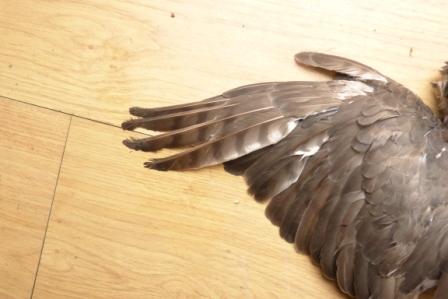
The prominent alula of the sparrowhawk wing (feather at uppermost edge of wing), (Photo: Sean Fagan).
.
What is the function of the alula?
The alula functions in a similar fashion to the wing flaps of an aircraft – when the alula is raised up and forward from the main body of the wing it greatly assists in slowing the bird down while sharply raising the bird without, crucially, stalling the bird mid-air.
A favoured hunting technique of sparrowhawks is to fly low, just above ground surface and then suddenly rise onto their prey. The alula feathers greatly assist in providing the necessary deceleration and steep ascending flight for such a such a sweeping, precise movement.
In a way the alula functions as a supplementary slow-action brake for the sparrowhawk.
.
"Many extinct and ancient relatives of modern birds had alulae, as do flies (insects of order diptera). I find it fascinating that evolutionary selection pressure has produced this structure in such diverse and relatively unrelated groups as birds and some flying insects. And that man has (once again) copied nature to solve a modern problem".
~ Ron Dudley
.
2. A LONG, FLEXIBLE TAIL
The tail of the sparrowhawk is very long and flexible. The tail can also be spread quite widely and, when closed, is quite narrow. The long, flexible, broad or narrow tail makes the tail of the sparrowhawk a very effective aerial rudder – which enables the hawk to steer itself, very precisely, through the tangle of branches that is typical of woodlands.
The tail is quite flexible - and can be flexed from left to right at quite a wide angle of plane from the body.
When the sparrowhawk is slipping through the branches and foliage its tail alternates quite rapidly from fanned out to narrow, and from left to right - using that tail to the maximum to steer, speed up and slow down.
It’s a breath-taking sight to see a sparrowhawk in full chase mode after its quarry, through a dense wood, and somehow, as if by magic, avoiding injurious contact with foliage and branches. It achieves these extraordinary aerial feats in large part due to its rudder-like tail.
.
.
3. BROAD, SHORT WINGS
The wings of the sparrowhawk are noticeably short and broad. Long wings are an unwieldy and potentially disastrous impediment for a aerial woodland predator.
Through rapid beating of its short, broad wings the sparrowhawk can achieve exceptional acceleration – ideal for swiftly closing down the distance between predator and terminal contact with prey.
Short wings can also be quickly folded into the body and rapidly released for rapid wing beating, which is what sparrowhawks commonly do when avoiding obstructions while in pursuit of prey through foliage.
.
.
4. LONG LEGS, LONG TOES & LONG TALONS
The legs and toes of the sparrowhawk are quite long in proportion to its overall size. Also, the length of the sparrowhawks talons are exceptionally long. A raptor of similar size to the sparrowhawk – the kestrel, Falco tinnunculus, has legs, toes and talons that are much shorter. Why is this so?
It’s all to do with diet. The diet of kestrels is mostly terrestrial prey such as small mammals, small reptiles and invertebrates. Kestels mostly kill their prey by the sheer force of pouncing hard upon their prey and do not require particularly strong or long legs, toes and talons to achieve dispatch of their prey. The sparrowhawk is a bird that preys on other birds and needs specialised foot weaponry for catching birds.
.
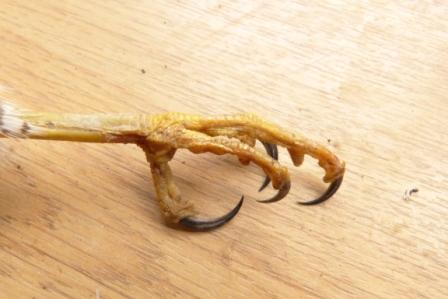
For such a slim, streamlined bird - the sparrowhawk possesses a very formidable set of talons. The rear talon (hallux) is noticeably well developed (Photo: Sean Fagan)
.
Birds, in general, have excellent eyesight, quick reflexes and fly quickly when startled – making them very tricky prey items for an aerial predator such as the sparrowhawk.
The reason why the talons, toes and legs of the sparrowhawk are so elongated is to maximise the reach of the talons – so it can very quickly reach out and grasp its fast moving quarry mid-air.
It’s the middle toe – the longest toe, that does the initial grasping of its avian prey.
The rear talon or hallux is very powerful and assists in clamping the talons into a tight grasp of its prey. Mercifully, death is instantaneous.
.
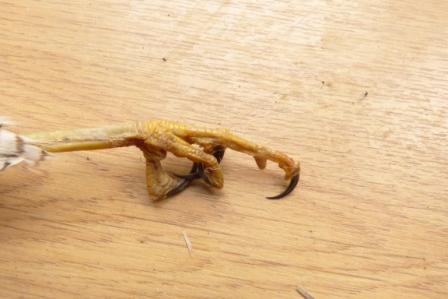
The impressively long middle toe of the sparrowhawk – the ideal tool for reaching out to grasp birds mid-air (Photo: Sean Fagan)
.
The sparrowhawk is a superb predator - fiery-eyed, stealthy - biological elegance and fury.
To see a sparrowhawk searing through the woodland air - its dark, sleek aerodynamic form conjured out from the dense woodland foliage – is a breath-taking sight to behold.
I hope - next time you see a sparrowhawk, you may revel in observing an understated but sublime predator.
I can't help pausing with admiration whenever I see a sparrowhawk - its unflinching intent and stunning design is enough to give any admirer of nature a moment of pleasure.
*Don't forget to check out short, 3 minute video of a hunting sparrowhawk at the end of this article below (contains some truly stunning footage).
.
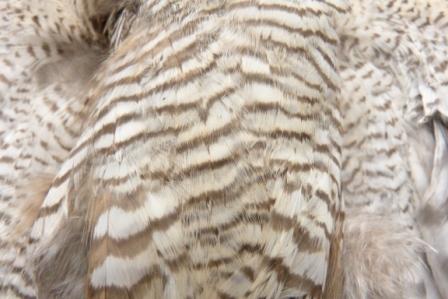
The fascinating, camouflaging barring pattern of the female sparrowhawk (males have an orange-patterned chest), (Photo: Sean Fagan).
.
.
Related articles on this website:
.
*Check us out on Instagram, Twitter & Facebook for more outdoor-related topics.
.
Recommended Reading:
- Manual of Ornithology - Avian Structure & Function. Noble S. Proctar & Patrick J. Lynch
- Woodlands. Chris Packham (Outstanding book for naturalist and bushcrafter alike - selling very cheaply at the moment via Amazon)
.
Resources:- Information on the Sparrowhawk (from the excellent Birdwatch Ireland website)
- Info & photos on the avian Alula (from outstanding bird photographer, Ron Dudley)
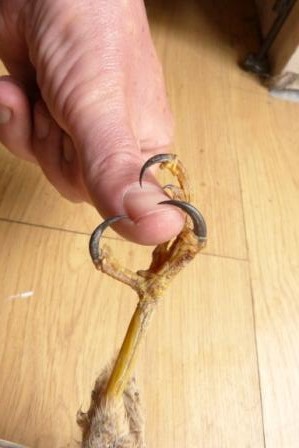
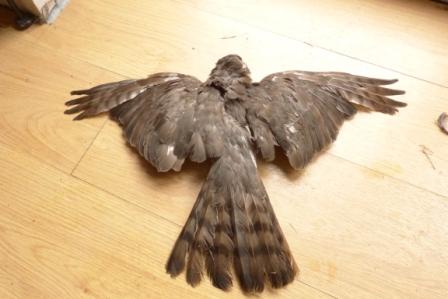
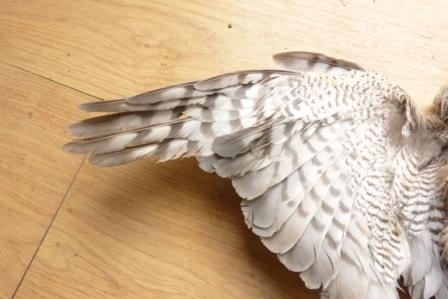

Recent Comments